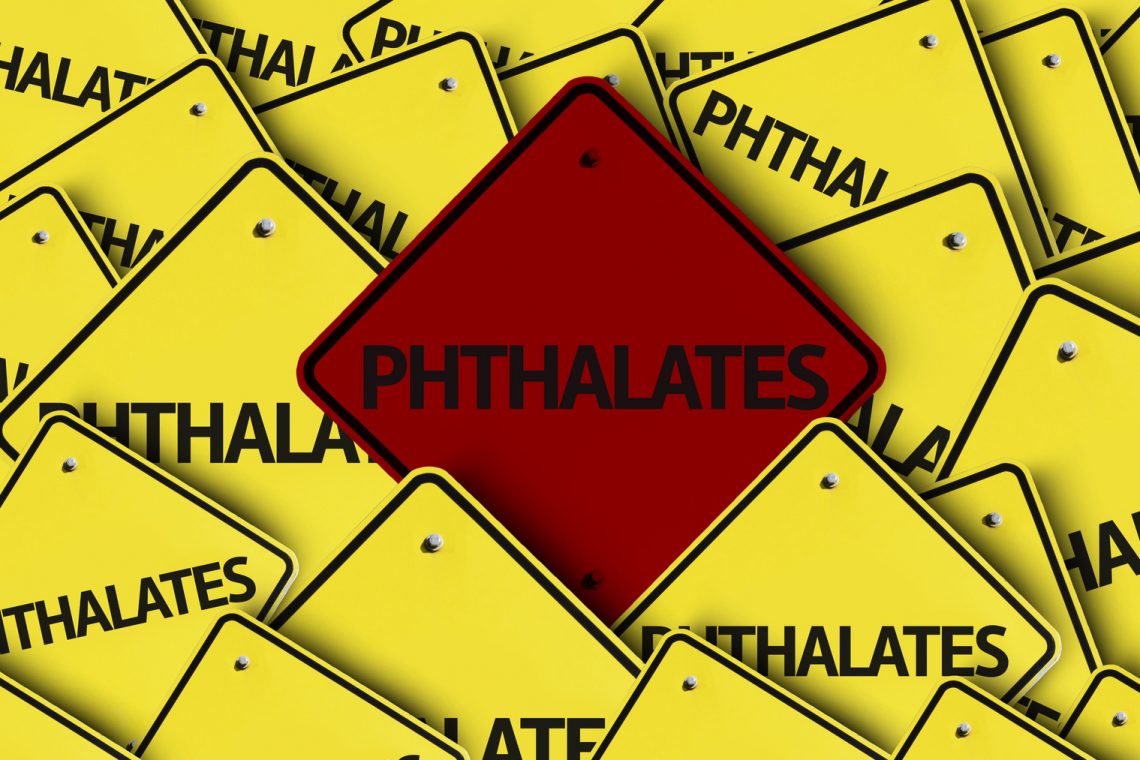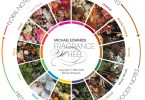What are phthalates?
Phthalates are industrial chemicals commonly found in many consumer products including, vinyl flooring and wall covering, detergents, lubricating oils, solvents, food packaging, and personal care products such as soaps, shampoos, hair sprays and nail polish. Other phthalates are used in flexible plastics like blood bags, tubing or children’s toys, and in some pharmaceutical and pesticide formulations.
Animal studies have found that some phthalates given at very high doses to animals during pregnancy produce birth defects among offspring. In general, children’s exposure to phthalates is greater than that of adults. In a 1990s Canadian study that modeled ambient exposures, it was estimated that daily exposure to DEHP was 9 μg/kg body weight/day in infants, 19 μg/kg body weight/day in toddlers, 14 μg/kg body weight/day in children, and 6 μg/kg body weight/day in adults. [1]
High concerns are [2]:
- Endocrine disruption
- Organ system toxicity (non-reproductive),
- Persistence and bioaccumulation
How phthalates have been used in cosmetics
The main phthalates used in cosmetic products are dibutylphthalate (DBP), which has been commonly used as a plasticizer in products like nail polishes; dimethylphthalate (DMP), which has been commonly used in hair sprays; and diethylphthalate (DEP), which has been commonly used as a solvent and fixative in fragrances. According to a 2010 survey of cosmetics conducted by the FDA, DBP and DMP are now used rarely. DEP is the only phthalate still commonly used in cosmetics.
Phthalates are also used as fragrance ingredients in many cosmetics, but consumers won’t find these listed on the label. Fragrance recipes are considered trade secrets, so manufacturers are not required to disclose fragrance chemicals in the list of ingredients.
How can I avoid phthalates?
1. Formulate your products with phthalate-free fragrance oils, scent your products with essential oils or create fragrance-free products. Avoid products labelled simply as “fragrance” or “parfum”. Look for those that specifically state “phthalate-free” on the label.
2. Never heat ingredients in plastic containers. High heat increases the leaching of phthalates and other chemicals.
3. Choose your packaging carefully. Look for plastic containers with recycling codes 1 (PET), 2 (HDPE), or 5 (Polypropylene). Plastic products with recycling codes 3 (PVC) and 7 (polycarbonate) may contain phthalates or BPA. PET plastic bottles and PET plastic jars (also known as PETE and designated by a recyclable “1”) do not contain phthalates or BPA. PET is globally recognized as a safe, recyclable packaging material.
Specific Information by individual phthalate:
DEHP or di-(2-ethylhexyl) phthalate or Bis (2-ethylhexyl) phthalate: Used as a softener in PVC products, such as IV bags, tubing, and other medical devices
BzBP or benzylbutyl phthalate: Used in vinyl flooring, car-care products, and personal care products
DBP or di-n-butyl phthalate: Used in nail polish and other personal care products
DEP or diethyl phthalate: Used in personal care products, such as deodorants, perfume, cologne, aftershave lotion, shampoo, hair gel, hand lotion
DMP or dimethyl phthalate: Used in insect repellent, plastics, and solid rocket propellant
Mono-ethyl phthalate
People exposed to diethyl phthalate will excrete mono-ethyl phthalate in their urine. The amount of mono-ethyl phthalate is an indicator of how many contacts with diethyl phthalate has occurred. Diethyl phthalate is an industrial solvent used in many consumer products, particularly those containing fragrances. Products that may contain diethyl phthalate include perfume, cologne, bar soap, shampoo, and hand lotion. It was detected at levels ranging from 176.0 micrograms per litre of urine at the 10th percentile up to 1,150 micrograms per litre of urine at the 90th percentile
Mono-butyl phthalate
People exposed to dibutyl phthalate will excrete mono-butyl phthalate in their urine. The amount of mono-butyl phthalate is an indicator of how many contacts with dibutyl phthalate has occurred. Dibutyl phthalate is an industrial solvent used in many consumer products. Products that may contain dibutyl phthalate include nail polishes, cosmetics, and insecticides. It was detected at levels ranging from 26.7 micrograms per litre of urine at the 10th percentile up to 98.5 micrograms per litre of urine at the 90th percentile
Mono-benzyl phthalate
People exposed to benzylbutyl phthalate will excrete mono-benzyl phthalate in their urine. The amount of mono-benzyl phthalate is an indicator of how many contacts with benzylbutyl phthalate has occurred. Benzylbutyl phthalate is an industrial solvent used in many consumer products such as adhesives, sealants, cosmetics, and car-care products.
Mono-cyclohexyl phthalate
People exposed to dicyclohexyl phthalate will excrete mono-cyclohexyl phthalate in their urine. The amount of mono-cyclohexyl phthalate is an indicator of how many contacts with dicyclohexyl phthalate has occurred. Dicyclohexyl phthalate is used primarily in research laboratories. It was below the level of detection at the 10th percentile and less than 1.00 microgram per litre of urine at the 90th percentile
Mono-2-ethylhexyl phthalate
People exposed to diethylhexyl phthalate will excrete mono-2-ethylhexyl phthalate in their urine. The amount of mono-2-ethylhexyl phthalate is an indicator of how many contacts with diethylhexyl phthalate has occurred. Diethylhexyl phthalate is primarily used to produce flexible plastics, such as PVC tubing and blood bags. Diethylhexyl phthalate has been removed from most children’s toys and food packaging in the United States, but some manufacturers refuse to use a safer replacement. It was detected at levels ranging from 3.5 micrograms per litre of urine at the 10th percentile up to 13.6 micrograms per litre of urine at the 90th percentile
Mono-n-octyl phthalate
People exposed to dioctyl phthalate will excrete mono-n-octyl phthalate in their urine. The amount of mono-n-octyl phthalate is an indicator of how many contacts with dioctyl phthalate has occurred. Dioctyl phthalate is primarily used to produce flexible plastics. It was below the level of detection at the 10th percentile and was detected at 1.9 micrograms per litre of urine at the 90th percentile
Mono-isononyl phthalate
People exposed to diisononyl phthalate will excrete mono-isononyl phthalate in their urine. The amount of mono-isononyl phthalate is an indicator of how many contacts with diisononyl phthalate has occurred. Diisononyl phthalate is primarily used to produce flexible plastics. Diisononyl phthalate is a mixture of many compounds. These compounds are produced with side alkyl chains of C8, C9, and C10 isomers. It was below the level of detection at the 10th percentile and was detected at 4.3 micrograms per litre of urine at the 90th percentile
References
1. 23 May 2012 Expertsvar (2012-05-23). “Phthalates in PVC floors taken up by the body in infants”. Alphagalileo.org. Retrieved 2013-09-23.
2. http://www.ewg.org/skindeep/ingredient/701929/DIBUTYL_PHTHALATE/
3. Mylchreest E, Cartley RC, Foster PMD. Male reproductive tract malformations in rats following gestational and lactational exposure to dibutyl phthalate: an antiandrogenic mechanism? Toxicol Sci 1998;43:47-60.
4. Thomas JA, Thomas MJ. Biological effects of diethylhexyl phthalate and other phthalic acid esters. Crit Rev Toxicol 1984;13: 283-317
For more information about the National Report on Human Exposure to Environmental Chemicals please contact the Centers for Disease Control and Prevention National Center for Environmental Health Division of Laboratory Sciences Mail Stop F-20 4770 Buford Highway, N.E. Atlanta, Georgia 30341-3724 Telephone (toll-free): 1-866-670-6052 E-mail: ncehdls@cdc.gov



